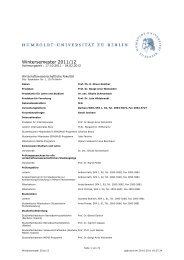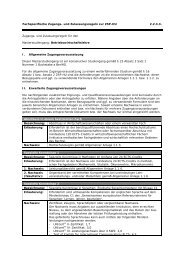Measuring the Effects of a Shock to Monetary Policy - Humboldt ...
Measuring the Effects of a Shock to Monetary Policy - Humboldt ...
Measuring the Effects of a Shock to Monetary Policy - Humboldt ...
You also want an ePaper? Increase the reach of your titles
YUMPU automatically turns print PDFs into web optimized ePapers that Google loves.
Bayesian FAVARs with Agnostic Identification 35<br />
There is <strong>the</strong> BBE FAVAR identification scheme, also applied in this <strong>the</strong>sis, and a slightly<br />
modified version that is applied by S<strong>to</strong>ck and Watson (2005). Fur<strong>the</strong>rmore <strong>the</strong> approach<br />
<strong>of</strong> Favero and Marcellino (2005) and Favero, Marcello and Neglia (2004) is introduced in<br />
<strong>the</strong> survey by S<strong>to</strong>ck and Watson (2005).<br />
Here as in <strong>the</strong> VAR case <strong>the</strong> fac<strong>to</strong>r’s structural shocks are assumed <strong>to</strong> be linearly<br />
related <strong>to</strong> <strong>the</strong> reduced form fac<strong>to</strong>r innovations.<br />
vt = Qut<br />
where Q is a an (orthonormal) invertible [q × q] matrix. For identifying <strong>the</strong> trans-<br />
formation matrix Q <strong>the</strong>re are two ways. The one is <strong>the</strong> full system identification by<br />
Blanchard and Watson (1986) who strive <strong>to</strong> identify all elements <strong>of</strong> Q. The o<strong>the</strong>r ap-<br />
proach is <strong>the</strong> single-equation identification where only one row <strong>of</strong> Q is required in order<br />
<strong>to</strong> identify <strong>the</strong> one respective shock. The latter one is <strong>the</strong> relevant one for us as, we are<br />
interested only in <strong>the</strong> identification <strong>of</strong> <strong>the</strong> shock attributable <strong>to</strong> monetary policy. There-<br />
fore we interested in a single row qs <strong>of</strong> <strong>the</strong> orthonormal matrix Q .<br />
Uhlig’s Sign Restriction<br />
As already introduced <strong>the</strong> sign restriction approach in its version advanced by Uhlig<br />
(2005) is <strong>the</strong> most reasonable approach in my view. Conventional wisdom says that after<br />
a monetary policy contraction <strong>the</strong> federal funds rate should increase, <strong>the</strong> prices should fall,<br />
and finally real output should fall. In o<strong>the</strong>r identification schemes that do not accomplish<br />
this wisdom, <strong>the</strong> researchers tend call this empirical observation a ”puzzle”. There are<br />
even some researchers that try <strong>to</strong> build a model producing such puzzles out <strong>of</strong> a model as<br />
has been done by CEE(2005). This seems unreasonable <strong>to</strong> me, because here one has <strong>to</strong> be<br />
very certain about <strong>the</strong> chosen identification scheme, and neglect any possible estimation<br />
mistakes not accomplished by <strong>the</strong> identification scheme chosen. Sims gives <strong>the</strong> advice<br />
<strong>to</strong> avoid unreasonable identification schemes. The approach by Uhlig seems reasonable,


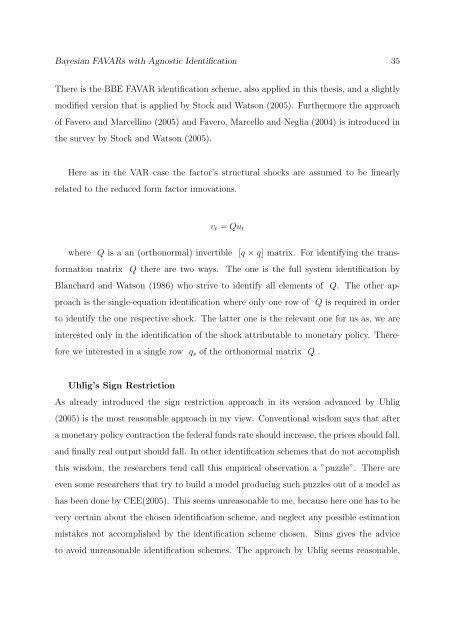
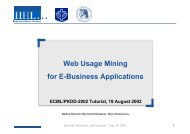
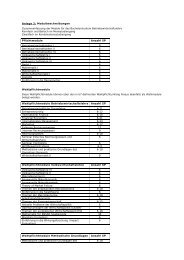
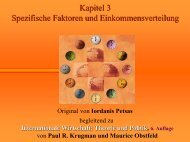
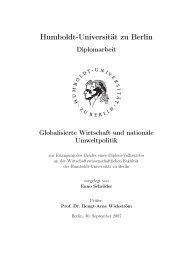
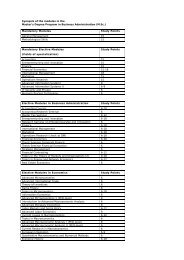
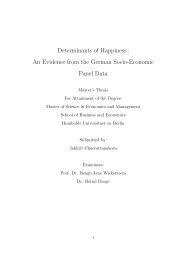
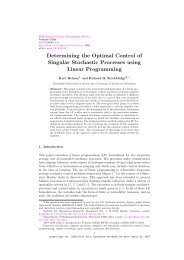
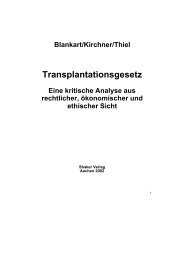
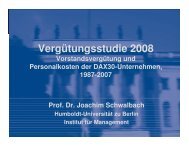

![[Text eingeben] [Text eingeben] Lebenslauf Anna-Maria Schneider](https://img.yumpu.com/16300391/1/184x260/text-eingeben-text-eingeben-lebenslauf-anna-maria-schneider.jpg?quality=85)

